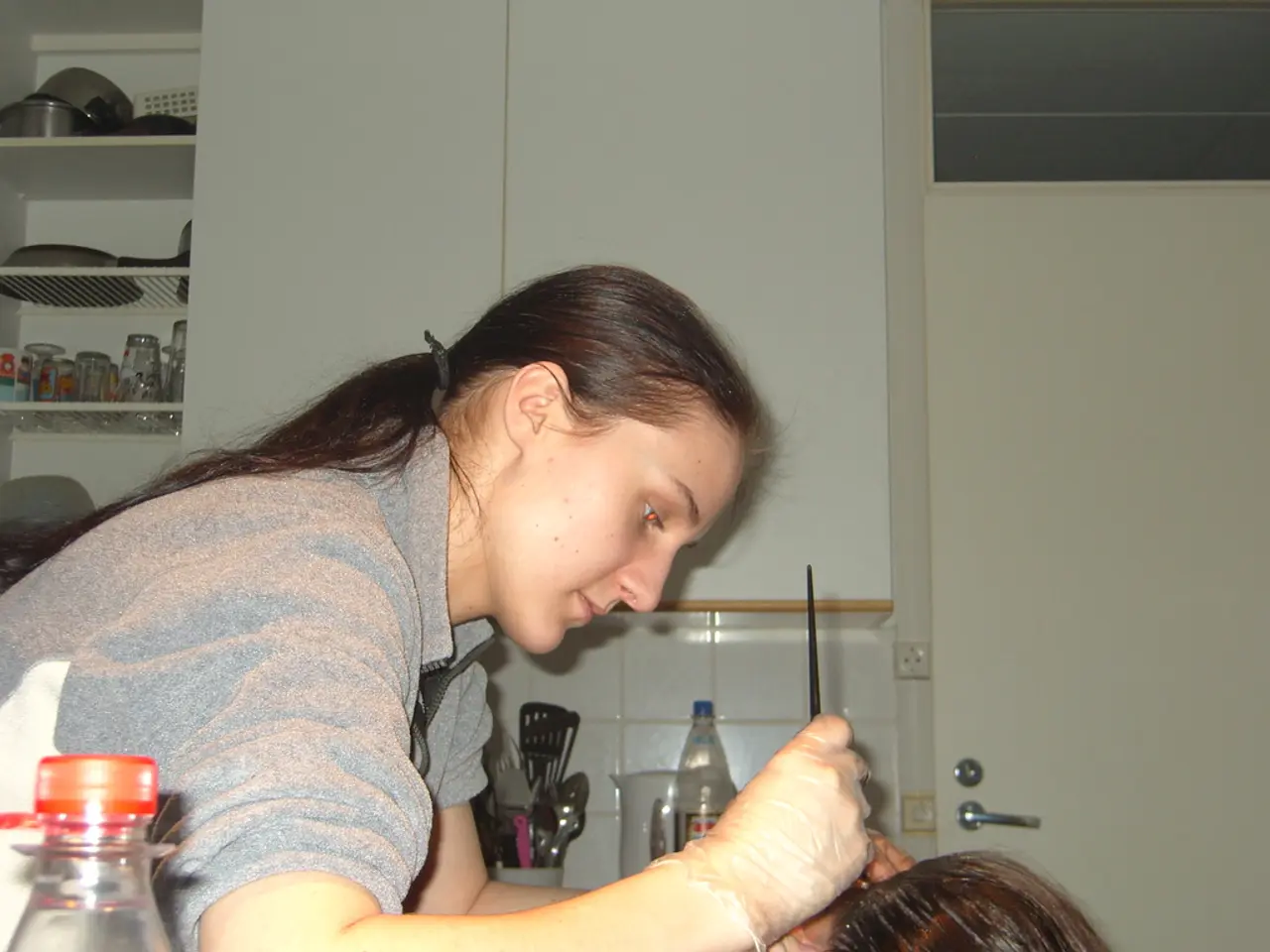Guidelines for Alleviating a Severe Instance of Shaving Irritation
Razor burn and folliculitis can be uncomfortable and unsightly, but with the right care, they can be effectively managed. Here are some home remedies and prevention tips to help you soothe razor burn and prevent folliculitis.
Treating Razor Burn
When dealing with razor burn, it's essential to act quickly to reduce discomfort and speed up healing. Here are some effective home remedies:
- Cold Compresses: Apply a cold compress to reduce redness and irritation.
- Aloe Vera Gel: Directly apply aloe vera gel to lessen inflammation and aid in healing.
- Witch Hazel: Use witch hazel to calm redness and prevent infections.
- Diluted Tea Tree Oil: Try diluted tea tree oil for its antiseptic effects to reduce inflammation and the risk of bacterial infection.
- Coconut Oil or Pure Honey: Use these for moisturizing and antimicrobial benefits.
- Warm Compresses or Epsom Salt Baths: These can help soothe ingrown hairs and loosen them if present.
Preventing Folliculitis
Folliculitis, an inflammation or infection of hair follicles often caused by shaving irritation, can be prevented with proper care. Here are some tips:
- Keep the skin clean and moisturized with alcohol-free moisturizers or soothing balms after shaving.
- Avoid excessive pressure when shaving and always shave in the direction of hair growth.
- Use a sharp, clean razor, and rinse the blade frequently during shaving.
- Avoid scratching or popping bumps to prevent infection.
- Exfoliate gently before shaving to remove dead skin cells, reducing the chance of clogged follicles.
Additional Tips
- Rinse with cool water after shaving and pat the skin dry gently.
- Allow skin to breathe post-shave by avoiding tight clothing immediately afterward.
- Over-the-counter creams containing hydrocortisone, salicylic acid, or benzoyl peroxide may assist in reducing inflammation and preventing bacterial growth, but should be patch-tested first.
In conclusion, consistent care using natural anti-inflammatory and antibacterial remedies combined with proper shaving techniques reduces razor burn severity and prevents secondary infections like folliculitis. If razor burn symptoms persist, escalate to speaking with a healthcare provider for further advice.
References:
[1] Mayo Clinic. (2021). Razor burn: First aid, prevention, and treatment. Retrieved from https://www.mayoclinic.org/first-aid/first-aid-razor-burn/basics/art-20060625
[2] Healthline. (2021). How to get rid of razor burn: 11 home remedies. Retrieved from https://www.healthline.com/health/how-to-get-rid-of-razor-burn
[3] WebMD. (2021). Razor Burn: Symptoms, Causes, and Treatments. Retrieved from https://www.webmd.com/beauty/makeup-skincare-tips/razor-burn-symptoms-causes-treatments
[4] American Academy of Dermatology. (2021). Ingrown Hairs: Prevention and Treatment. Retrieved from https://www.aad.org/public/diseases/hair-and-scalp-care/ingrown-hairs
[5] Cleveland Clinic. (2021). Razor Burn: Prevention and Treatment. Retrieved from https://my.clevelandclinic.org/health/diseases/17861-razor-burn-prevention-and-treatment
Engaging in regular health-and-wellness practices, such as skin-care routines, can contribute to reduce the occurrence of razor burn and folliculitis, particularly in the context of women's health. For instance, adhering to a proper skin-care regimen post-shaving can promote overall skin health and minimize the risk of razor burn and folliculitis. This may include using alcohol-free moisturizers or soothing balms, gentle exfoliation, and applying cold compresses or aloe vera gel to soothe irritation.




